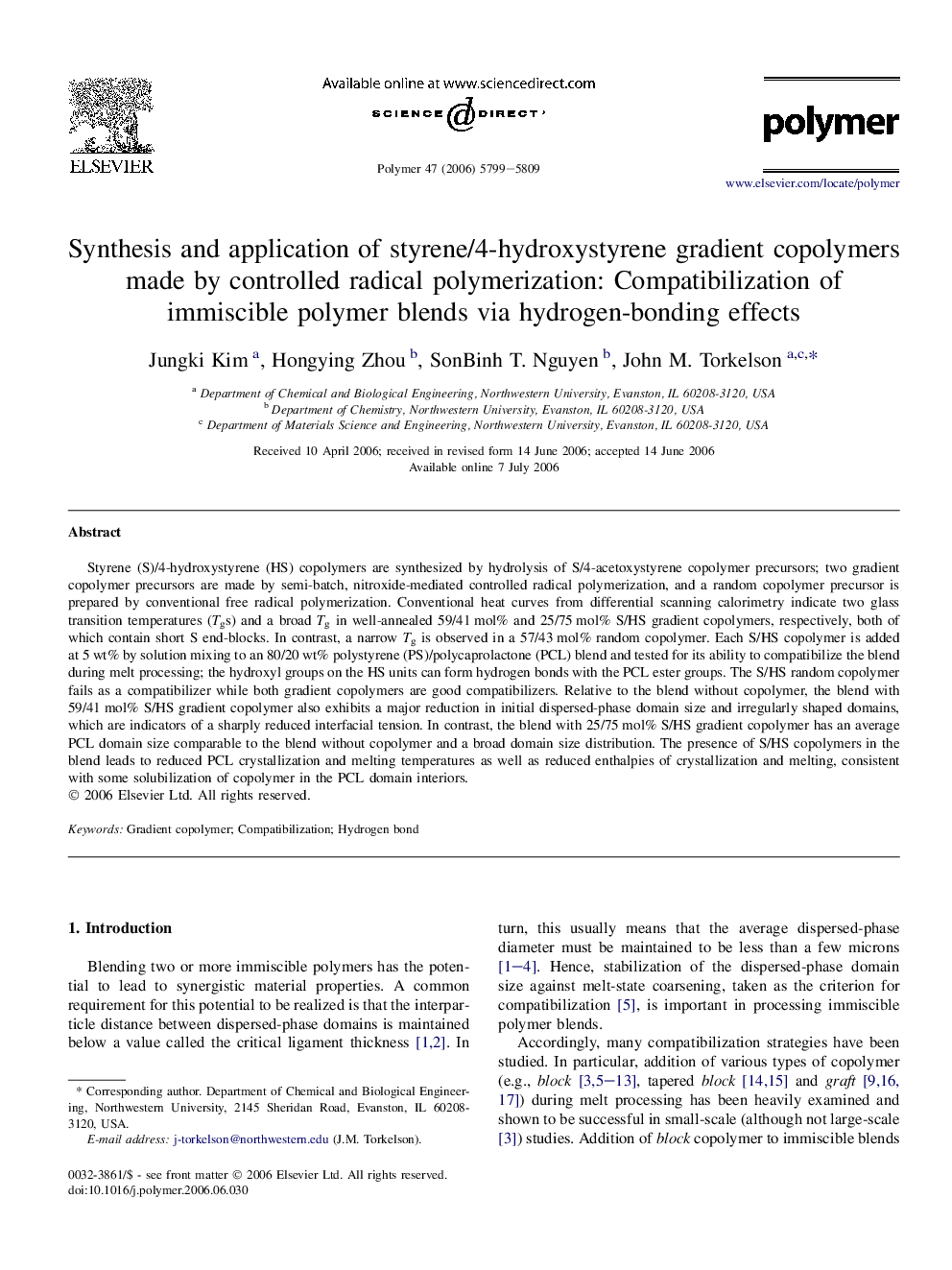| Article ID | Journal | Published Year | Pages | File Type |
|---|---|---|---|---|
| 5190641 | Polymer | 2006 | 11 Pages |
Styrene (S)/4-hydroxystyrene (HS) copolymers are synthesized by hydrolysis of S/4-acetoxystyrene copolymer precursors; two gradient copolymer precursors are made by semi-batch, nitroxide-mediated controlled radical polymerization, and a random copolymer precursor is prepared by conventional free radical polymerization. Conventional heat curves from differential scanning calorimetry indicate two glass transition temperatures (Tgs) and a broad Tg in well-annealed 59/41Â mol% and 25/75Â mol% S/HS gradient copolymers, respectively, both of which contain short S end-blocks. In contrast, a narrow Tg is observed in a 57/43Â mol% random copolymer. Each S/HS copolymer is added at 5Â wt% by solution mixing to an 80/20Â wt% polystyrene (PS)/polycaprolactone (PCL) blend and tested for its ability to compatibilize the blend during melt processing; the hydroxyl groups on the HS units can form hydrogen bonds with the PCL ester groups. The S/HS random copolymer fails as a compatibilizer while both gradient copolymers are good compatibilizers. Relative to the blend without copolymer, the blend with 59/41Â mol% S/HS gradient copolymer also exhibits a major reduction in initial dispersed-phase domain size and irregularly shaped domains, which are indicators of a sharply reduced interfacial tension. In contrast, the blend with 25/75Â mol% S/HS gradient copolymer has an average PCL domain size comparable to the blend without copolymer and a broad domain size distribution. The presence of S/HS copolymers in the blend leads to reduced PCL crystallization and melting temperatures as well as reduced enthalpies of crystallization and melting, consistent with some solubilization of copolymer in the PCL domain interiors.
